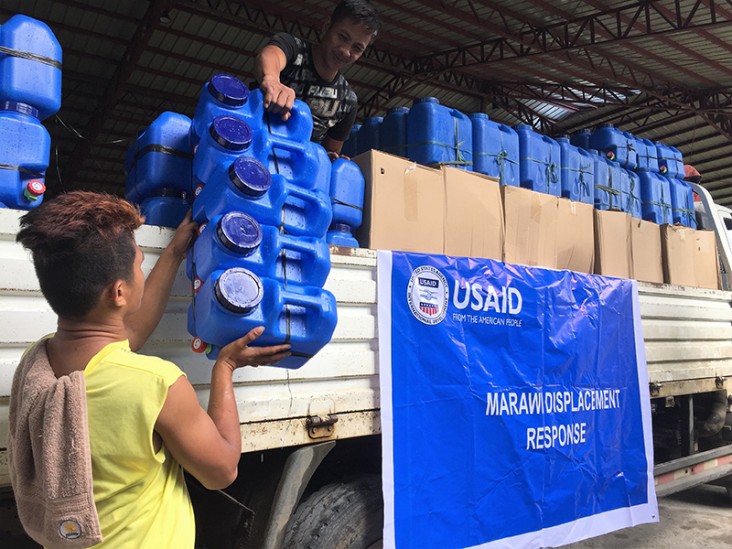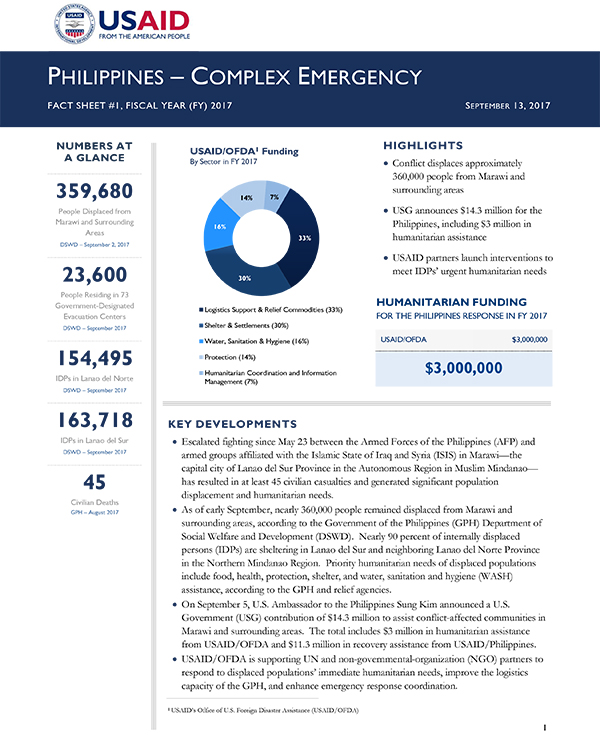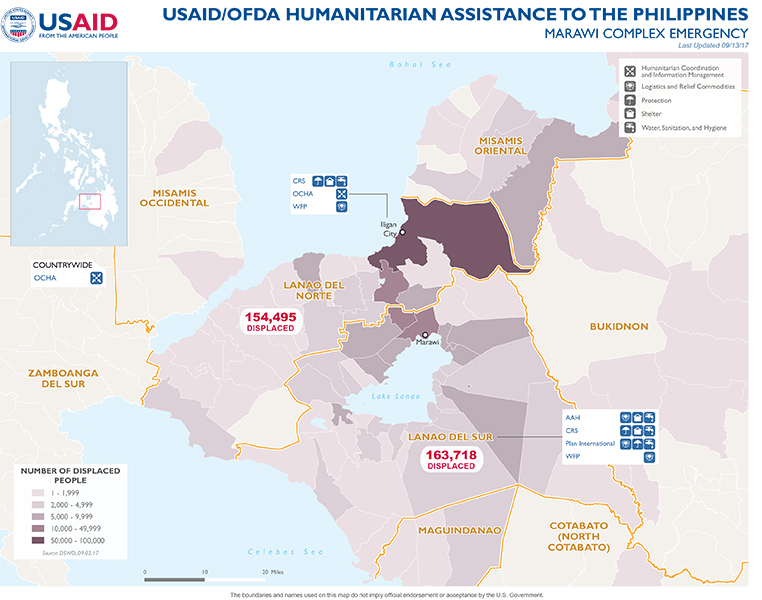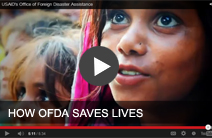- What We Do
- Agriculture and Food Security
- Democracy, Human Rights and Governance
- Economic Growth and Trade
- Education
- Ending Extreme Poverty
- Environment and Global Climate Change
- Gender Equality and Women's Empowerment
- Global Health
- Water and Sanitation
- Working in Crises and Conflict
- Disaster Assistance
- Political Transition Initiatives
- Conflict Mitigation and Prevention
- Countering Violent Extremism
- Disaster Risk Reduction
- Peacebuilding and Reconciliation
- Providing Safe & Secure Environments for Development
- Recovering From Crisis
- Resilience
- Tech Challenge for Atrocity Prevention
- World Humanitarian Day
- U.S. Global Development Lab

Latest Philippines Fact Sheet
Philippines Map - 09-13-2017 ![]() (pdf - 1 MB)
(pdf - 1 MB)
Key Developments
Escalated fighting since May 23 between the Armed Forces of the Philippines and armed groups affiliated with the Islamic State of Iraq and Syria in Marawi—the capital city of Lanao del Sur Province in the Autonomous Region in Muslim Mindanao—has resulted in at least 45 civilian casualties and generated significant population displacement and humanitarian needs.
As of early September, nearly 360,000 people remained displaced from Marawi and surrounding areas, according to the Government of the Philippines (GPH) Department of Social Welfare and Development. Nearly 90 percent of internally displaced persons are sheltering in Lanao del Sur and neighboring Lanao del Norte Province in the Northern Mindanao Region. Priority humanitarian needs of displaced populations include food, health, protection, shelter, and water, sanitation and hygiene assistance, according to the GPH and relief agencies.
On September 5, U.S. Ambassador to the Philippines Sung Kim announced a U.S. government contribution of $14.3 million to assist conflict-affected communities in Marawi and surrounding areas. The total includes $3 million in humanitarian assistance from USAID’s Office of U.S. Foreign Disaster Assistance (USAID/OFDA) and $11.3 million in recovery assistance from USAID/Philippines.
USAID/OFDA is supporting UN and non-governmental-organization partners to respond to displaced populations’ immediate humanitarian needs, improve the logistics capacity of the GPH, and enhance emergency response coordination.
Background
Situated on the Western Pacific typhoon belt and the fringes of the Pacific Ring of Fire, the Philippines is regularly affected by natural disasters that result in the loss of lives, homes, and livelihoods. Since 1990, USAID/OFDA has responded to more than 40 disasters in the Philippines while also supporting a variety of disaster risk reduction programs to build the capacity of the GPH and communities to prepare for and respond to the impacts of natural disasters.
When Typhoon Haiyan/Yolanda—one of the most powerful storms on record—struck the Philippines in November 2013, resulting in 6,300 deaths and affecting more than 16 million people, USAID provided more than $56 million of the $143 million U.S. government (USG) contribution to support GPH response efforts. USAID/OFDA deployed a Disaster Assistance Response Team (DART), which conducted assessments in affected areas of the Philippines, liaised with other humanitarian and government actors in the country, and recommended appropriate response options. USAID/OFDA simultaneously activated a D.C.-based Response Management Team to coordinate the USG humanitarian response, program relief activities, and provide support for the DART.










Comment
Make a general inquiry or suggest an improvement.